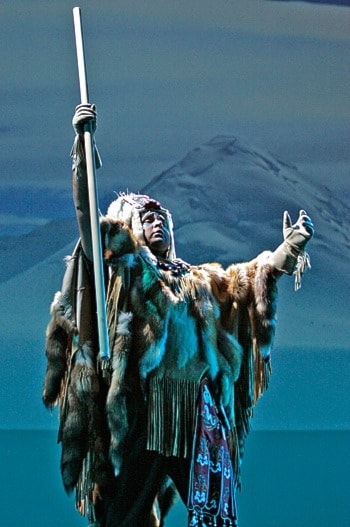The Vancouver Olympics are less than 30 days away, and it’s been a rocky approach, especially when it comes to aboriginal culture.
The troubles began in 2005 with a simple inukshuk.
Nunavut leaders questioned why they had not been consulted when the inukshuk was chosen as the official emblem for the Vancouver Olympics.
Then there were the Cowichan people of Vancouver Island who, in October, almost lost their bid to knit official Cowichan sweaters for the Olympics. After threatening to protest, their sweaters are now being sold alongside Hudson’s Bay Company Cowichan knockoffs.
A month later, the Vancouver Olympic Organizing Committee chose to outsource their Olympic merchandise to China, while labelling them “authentic aboriginal.”
There are also the protesters, such as the Six Nations of Caledonia, who diverted the Olympic torch from their traditional land saying it had no business to go through their sovereign territory.
“I know that some aboriginal people will be protesting at the Olympics,” said Duane Gastant-Aucoin who co-narrates What the Land Remembers, an Olympic showcase presented by the Council of Yukon First Nations.
“It’s something we talked about at length at the BC Summit of First Nations a couple weeks ago.”
He and his performance partner, Sharon Shorty, believe there are more positive ways to capture the world’s attention.
Gastant-Aucoin and Shorty are part of a collection of Yukon aboriginal artists and performers who will be travelling to Vancouver in February to present traditional aboriginal dancing, singing and storytelling from the territory.
On January 9th, the Council of Yukon First Nations presented the show to two sold-out audiences at the Yukon Arts Centre.
“We get more attention this way than through other ways,” said Shorty.
“I choose to share my cultural beliefs through laughter and performance.”
Shorty, who narrates the show as a cawing raven, is best known for her work as the comedic character, Grandma Susie.
Everybody has a right to speak their mind, said Gastant-Aucoin, who plays a wolf.
“It doesn’t matter what you say, but how you say it, and sometimes you can cross a line,” he said.
He sees the Yukon aboriginal showcase as an opportunity for Yukon First Nations people to get a variety of messages out there.
“In our piece there is a message about residential schools and how the (Alaska) highway affected us, but we’re not telling it as a way to shame the audience,” he said. “It’s more like this is what happened and this is how we’re looking to the future.”
The show features performances from all 14 First Nation groups in the territory and spoken words from the eight different language groups.
Well-known performers such as the Rising Sun a cappella trio, the Dakhka Khwaan Dancers, the Raven Spirit dance company, Diyet and Boyd Benjamin all perform in the show.
Other acts, such as The Dakwakada Dancers, the Ross River Dena Drummers, Jerry Alfred and Shun Dun, and Daniel Tlen will also share time in the spotlight.
Co-producers Charlene Alexander and Katie Johnson hired Columbian-Canadian Alejandro Ronceria to direct the show, a decision that gave Ronceria an “outside perspective” on Yukon talent, say Gastant-Aucoin and Shorty.
Ronceria, First Nations himself, has worked in the North before, assembling a production for the Nunavut independence celebration 10 years ago.
“(The Vancouver Olympic showcase) is a massive undertaking and he’s been very successful at putting the show together,” said Johnson.
Before travelling to the Yukon, Ronceria researched Yukon First Nations.
That’s when he had a vision that the show should be divided into four seasons.
“It came to me clearly because of the relationship people here have to the land,” said Ronceria.
The show opens as winter is turning to spring, a time for renewal, and ends as fall changes into winter, a time for wisdom, he said.
Springtime introduces the audience to the aboriginal people who live in the territory, while the summer, with its singing and dancing, is about relationships and a time for hunting and working.
The fall is more celebratory, with fiddling and dancing, while the winter focuses on the changes that came as a result of the gold rush and the introduction of the highway.
An impressive multimedia presentation highlights the action on stage and reminds people which season is being performed.
Most of the time it works well, but there are other times when the slides and pictures are distracting to the audience.
The show and its 42 performers will travel to Vancouver in mid-February where they will be welcomed by the Four Host First Nations at the Olympic aboriginal pavilion.
They’re expected to perform the piece six or seven times throughout the Games, including a trip to Whistler.
The dancers and musicians will be joined by elders, youth ambassadors and 10 aboriginal visual artists whose work will be showcased during the Games.
The trip will allow the aboriginal contingent to “show people that our culture is always evolving,” said Gastant-Aucoin.
It’s about talking about the good and the bad, but more importantly, it’s about passing on those stories, he said.
“We think even after the Games the show will travel everywhere,” said Shorty.
“Hanging out backstage with the team, everyone is so proud of what they’re representing.”
Contact Vivian Belik at
vivianb@yukon-news.com
